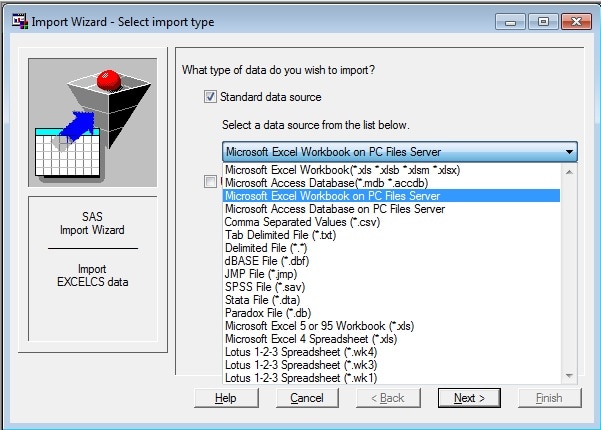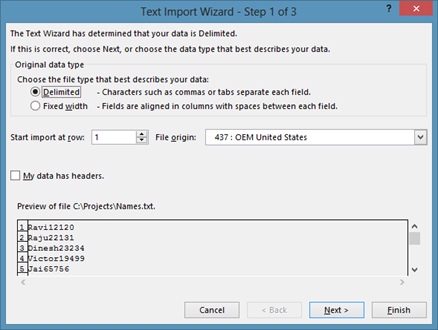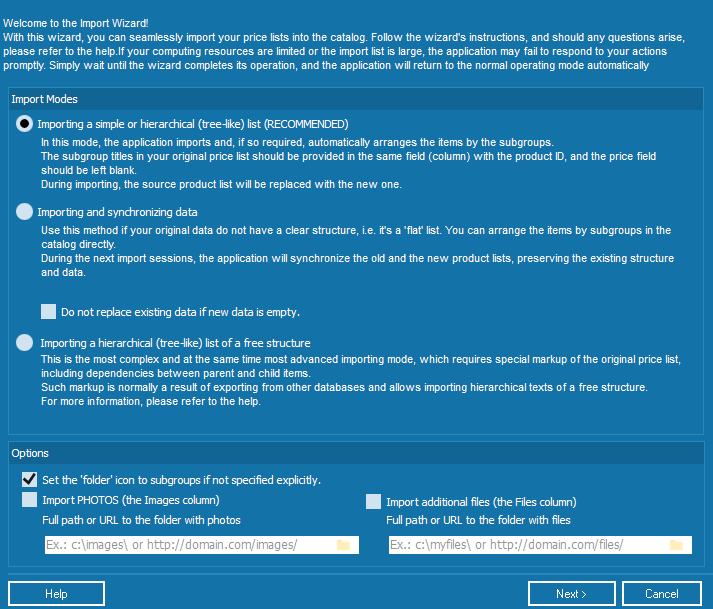
You will see an error markwe on the Excel Source.

Click New > Enter one of your Excel file path > click OK.Drag and drop Excel Source in the data flow.Drag and drop the Data Flow Task in the container.Go to Variable Mappings > Select the User:FilePath variable > Click OK to close the editor.When opening a SJA wizard multiple times and selecting an existing jobfile, the jobfile details were not displayed 2nd and higher times. Paste did not work in a column where a 'Foreign Key Lookup' icon displays (FK 'children' columns). Make sure that Enumerator is “Foreach File Enumerator” and Retrieve file name is set to “Fully qualified” Import External Data truncated DOUBLE and FLOAT values to 6 digits after decimal point. Go to Collection > Enter the folder path > Enter the file extension.

Right click on the Foreach Loop Container then click Edit.Drag and drop Foreach Loop Container to the Control Flow.
#Excel text import wizard multiple times how to#
How to Import Multiple Excel files to SQL Here are my step by step instructions to create a SSIS package for importing data from multiple Excel files to SQL with only one data flow and one Excel connection.įor example, I have two Excel files at C:\BI\SSIS\Import Hist Data\Source Files\Test Very Important NoteĮnsure that each Excel file has the same schema. I scratched my head.Īfter a while, I found a way to make it work and I’d like to share it with everyone to save your time. Every time something went wrong or I was missing something. I followed steps in several articles and Youtube videos, but I had no luck. I found many articles, but each article was slightly different and used a different approach to handle the situation. I’m too lazy to create all those data flows and Excel connections! That would take a lot of time. I could do it with 15 data flows and Excel connections in SSIS, but I didn’t want to do it that way because I wanted to find a more efficient way than creating 15 data flows and Excel connections. use linked copies of the same logger item).I was asked to import data to SQL from multiple (15) Excel files, and each Excel file contained historical data with more than 200,000 rows. (Note - I selected 'As new project for this walkthrough) > Next > Select Tasks. Import Wizard > Next > New Map (or existing) > Next > As New Project (2010) or My Project File Created in MS Project 2003. In general, you should create only one logger item, and reuse that logger at different locations in your experiment if necessary (i.e. File > Open > ODBC > Machine Data Source > Project Portfolio 2003 > Open. If you prefer to log only certain variables, you can disable the 'Log all variables' option, and indicate explicitly which variables you want to log. If you find that some variables are missing, you can explicitly add the name of a custom variable, or drag a variable from the variable inspector into the logger table. That way, all variables that OpenSesame knows about are written the log file. The simplest way to use the logger is by leaving the 'Log all variables (recommended)' enabled.

#Excel text import wizard multiple times trial#
Instead, you need to insert a logger item, typically at the end of your trial sequence. OpenSesame will not log your data automatically.


 0 kommentar(er)
0 kommentar(er)
